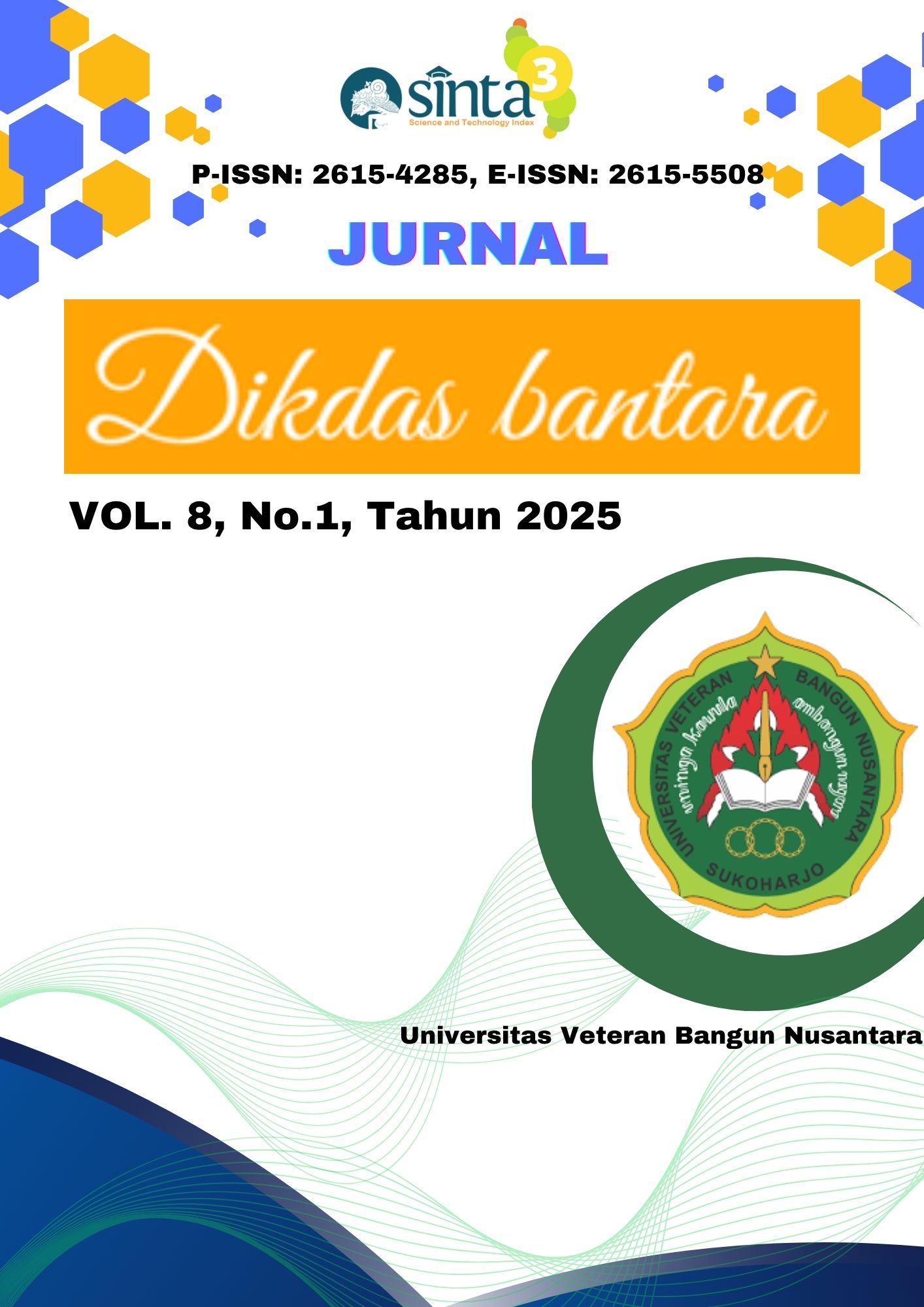Analisis Tren Penggunaan Instrumen Penilaian Berbasis Digital: Systematic Literature Review (2020-2025)
DOI:
https://doi.org/10.32585/dikdasbantara.v8i1.6708Abstrak
Kemajuan teknologi digital telah membawa perubahan signifikan dalam dunia penddikan, termasuk dalam pelaksanaan penilaian di sekolah dasar. Penelitian ini bertujuan untuk menganalisis tren penggunaan instrumen penilaian berbasis digital di tingkat sekolah dasar selama periode 2020–2025, serta mengidentifikasi tantangan dan kebutuhan pengembangan instrumen yang inovatif dan interaktif. Metode yang digunakan adalah systematic literature review (SLR) dengan mengumpulkan dan menyaring 1179 artikel dari Google Scholar dan Crossref, dengan kriteria inklusi hanya 9-artikel yang relevan. Hasil penelitian menunjukkan bahwa dominasi penelitian bersifat pengembangan (55, 56%), diikuti kuantitatif (22, 22%), dan tidak ditemukan studi tindakan kelas (PTK). Tren menunjukkan peningkatan penggunaan media digital seperti Quizizz, Wordwall, Google Form, dan Kahoot, namun masih terdapat kekurangan instrumen penilaian HOTS yang interaktif dan sesuai karakteristik materi, terutama dalam pembelajaran matematika. Tantangan utama meliputi rendahnya inovasi dalam metode evaluasi dan pemanfaatan media digital yang masih terbatas. Kesimpulan, diperlukan pengembangan instrumen digital yang responsif, multimedia, dan inovatif untuk meningkatkan efektivitas penilaian dan partisipasi siswa, mendukung pembelajaran abad ke-21 di tingkat dasar.
Kata kunci: Penilaian Digital, Pengembangan Instrumen, Sekolah dasar
Unduhan
Unduhan
Diterbitkan
Terbitan
Bagian
Lisensi
Hak Cipta (c) 2025 Khusnul Estining Tyas Tyas, Wahyu Lestari, Bambang Subali, Ellianawati Ellianawati

Artikel ini berlisensiCreative Commons Attribution-ShareAlike 4.0 International License.
The copyright to this article is transferred to Jurnal DIKDAS BANTARA if and when the article is accepted for publication under Creative Commons Attribution-ShareAlike 4.0 International License. The undersigned hereby transfers any and all rights in and to the paper including without limitation all copyrights to Jurnal Komunikasi Pendidikan. The undersigned hereby represents and warrants that the paper is original and that he/she is the author of the paper, except for material that is clearly identified as to its original source, with permission notices from the copyright owners where required. The undersigned represents that he/she has the power and authority to make and execute this assignment.
We declare that:
1. This paper has not been published in the same form elsewhere.
2. It will not be submitted anywhere else for publication prior to acceptance/rejection by this Journal.
3. A copyright permission is obtained for materials published elsewhere and which require this permission for reproduction.
Furthermore, I/We hereby transfer the unlimited rights of publication of the above mentioned paper in whole to Jurnal Komunikasi Pendidikan. The copyright transfer covers the right to reproduce and distribute the article, including reprints, translations, photographic reproductions, microform, electronic form (offline, online) or any other reproductions of similar nature. The corresponding author signs for and accepts responsibility for releasing this material on behalf of any and all co-authors. After submission of this agreement signed by the corresponding author, changes of authorship or in the order of the authors listed will not be accepted.
Retained Rights/Terms and Conditions
1. Authors retain all proprietary rights in any process, procedure, or article of manufacture described in the work.
2. Authors may reproduce or authorize others to reproduce the work or derivative works for the author’s personal use or for company use, provided that the source and the Jurnal Komunikasi Pendidikan copyright notice are indicated, the copies are not used in any way that implies Jurnal Komunikasi Pendidikan endorsement of a product or service of any employer, and the copies themselves are not offered for sale.
3. Although authors are permitted to re-use all or portions of the work in other works, this does not include granting third-party requests for reprinting, republishing, or other types of re-use.












